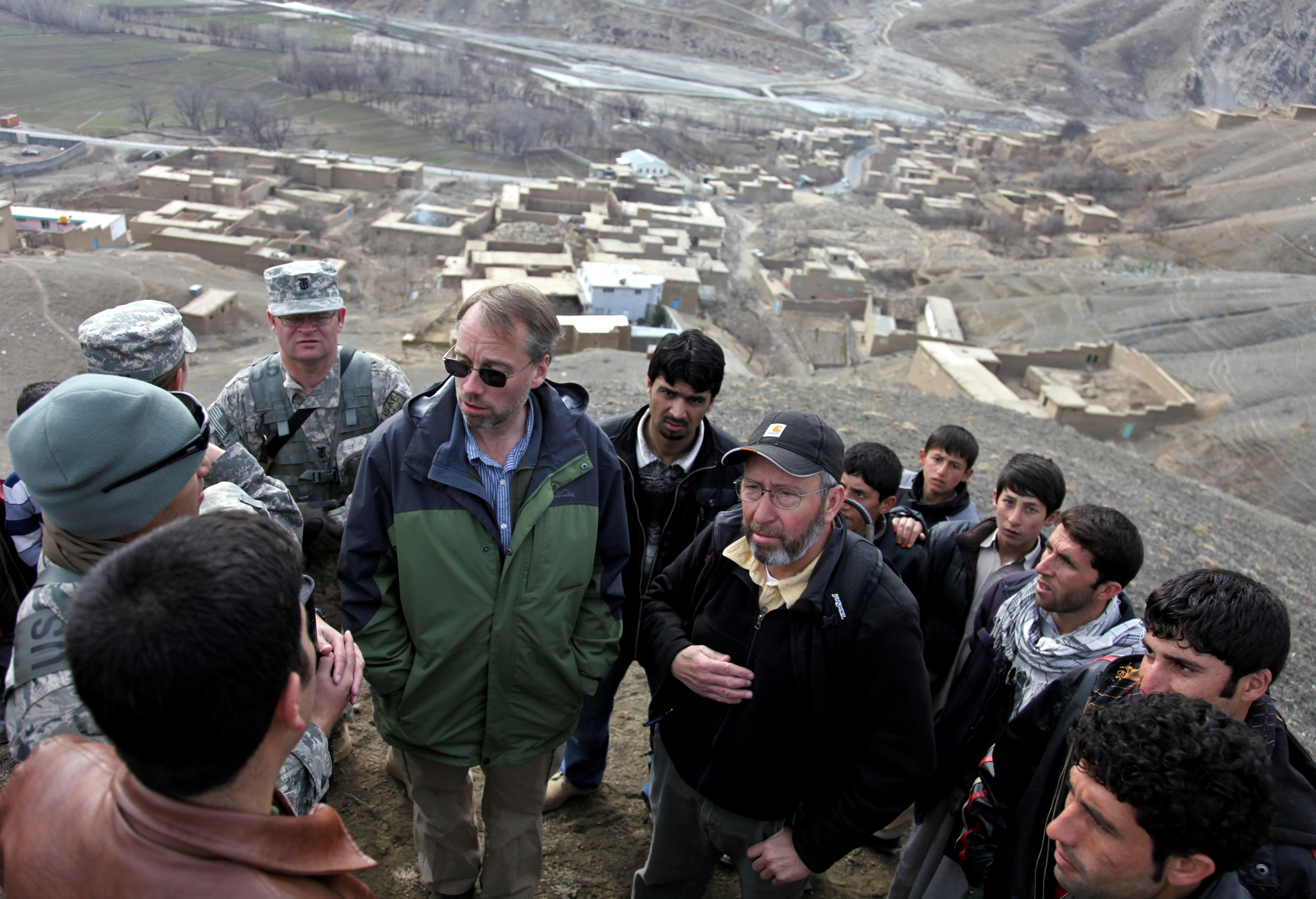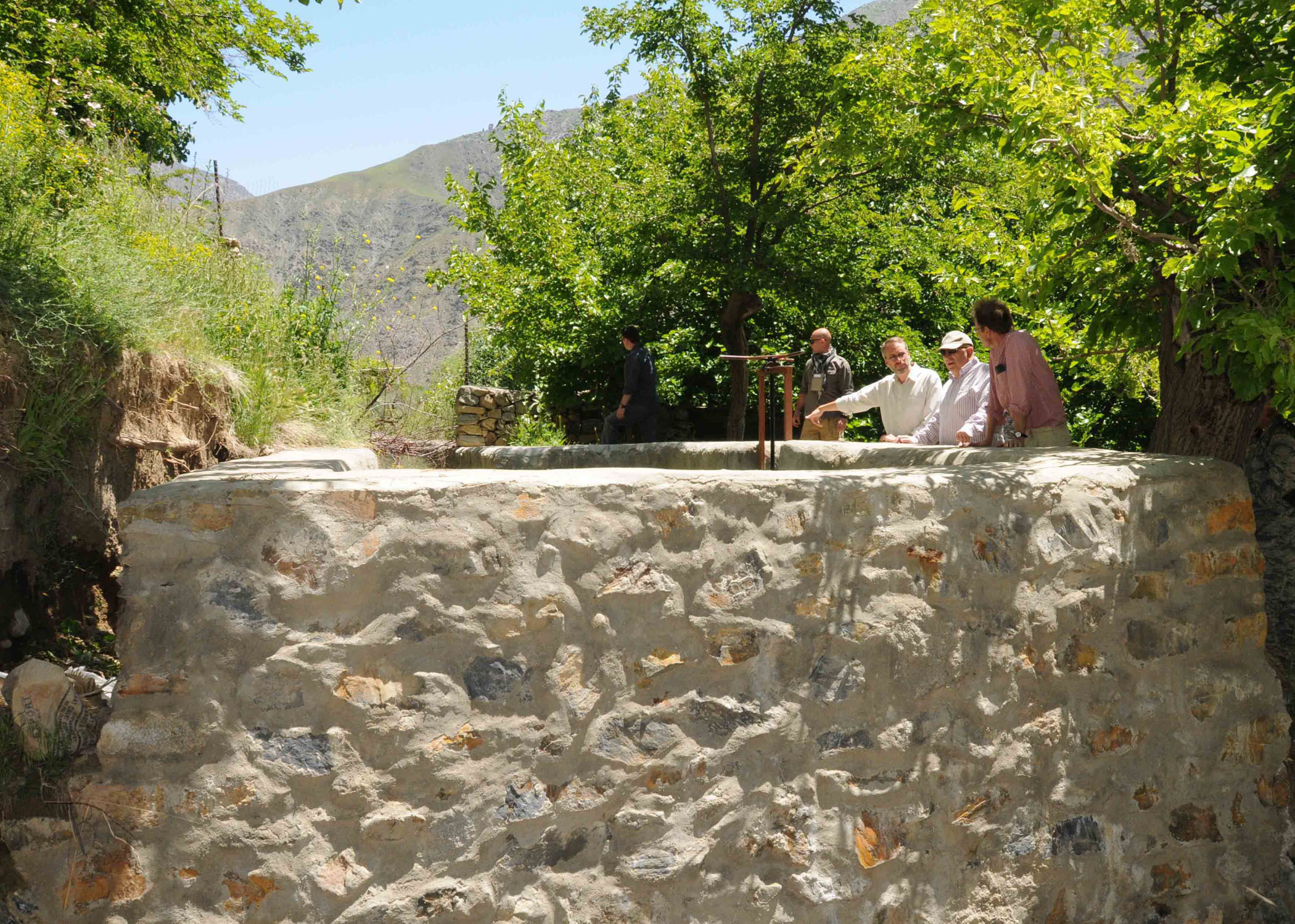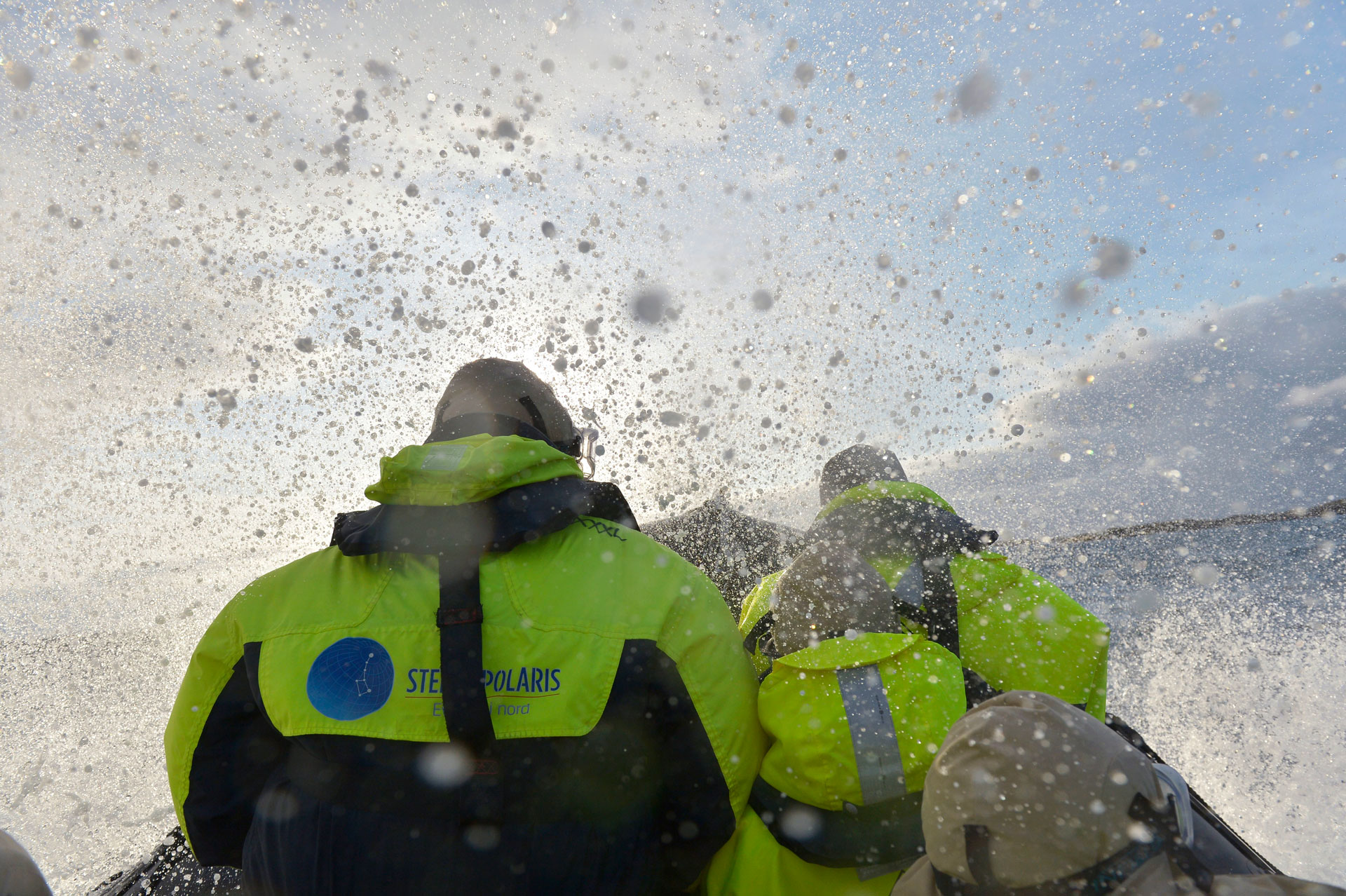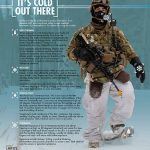
CHILLING EFFECT: A CH-47F Chinook assigned to 101st Airborne Division (Air Assault) perches on a mountain in October in the German Alps. As the U.S. revamps its Arctic capabilities, it must work with its allies around the world. (U.S. Army National Guard photo by Staff Sgt. Garrett L. Dipuma)
As the U.S. and other major world powers set their sights on the high north, a senior U.S. diplomat is focused on keeping things cool in the Arctic.
by Ellen Summey
There’s something peculiar about the finish line of a cross-country ski race. Or rather, what the competitors do when they cross it. They collapse onto the snow in rather dramatic fashion, gasping for air, after expending every last ounce of energy to complete the course. “I didn’t do that,” recalled Jim DeHart, the State Department’s U.S. Coordinator for the Arctic Region, when discussing his participation in the famous Norwegian Birkebeiner ski race in March 2018. “I was so cold, I was afraid I would break in half when I hit the ground. Plus, I knew I would never get up.”
DeHart, a career diplomat who was then chargé d’affaires (the senior embassy representative in the absence of an ambassador) for the U.S. Embassy in Oslo, had made it his goal to complete the enormously difficult 54-kilometer (33.6-mile) race during his three-year assignment in Norway—a country renowned for its love of cross-country skiing. “Nothing would make me more relatable to a normal Norwegian than completing the Birkebeiner,” he said in a January telephone interview with Army AL&T. “I thought they would give me a key to the city or something.” (Full disclosure: the author also worked at the embassy during DeHart’s tenure.)

MEDIA BLITZ: James DeHart, U.S. coordinator for the Arctic sits down for an interview with a Swedish news reporter for TV4 Nyheterna, on Sept. 24. (Photo by U.S. Embassy Stockholm, Sweden)
That year, the race was almost canceled because of extreme cold—it was -24 degrees Celsius (-11 Fahrenheit) and the regulations called for cancellation at -25 degrees. “I did the race in probably the slowest time you can do it without getting pulled off the course,” he said. “If you don’t keep up a certain minimum pace, they will put you on the ‘bus of shame’ back to Lillehammer.” But he made it. Barely. “As darkness was falling, I got to the finish line more than eight hours after I started—which is about five and a half hours behind the fastest skiers.” He later quipped that he had performed a true feat of athleticism, since the faster competitors only skied for two and a half hours, while he completed “a grueling eight-hour slog.”
COOPERATION IS KEY
Whether because of his demonstrated mastery of Nordic skiing or his reputation as a skilled and principled diplomat (likely the latter), in July 2020 DeHart was appointed as U.S. Coordinator for the Arctic Region. “The State Department decided that it was important to ensure that we have a balanced approach toward the Arctic,” DeHart said. “We have people working on the Arctic, from a security perspective, economic perspective, scientific research and environmental protection, and the secretary and other senior leaders wanted to make sure that we’re pursuing all those efforts in a well-coordinated, balanced way and bringing all of our tools to the table.”
The effects of climate change are perhaps more dramatic in the Arctic than anywhere else on Earth—satellite imagery reveals that sea ice is declining at a rate of approximately 13 percent each decade. And as the ice recedes, change is coming. “The Arctic region is really fascinating. I don’t think you can find another region of the world that is changing so quickly, physically and environmentally,” DeHart said. “Because it is warming so dramatically, it’s opening up the terrain to new players and new activities.” The region is still relatively untouched, when compared with other parts of the world, he said. “But that is going to change. There’s going to be more tourism, there’s going to be more commercial activity, investment, resource extraction, and also countries that are preparing themselves from a military perspective.”

A HISTORIC RACE: The Birkebeiner ski race is a cross-country race starting at Rena and finishing in Lillehammer, Norway. The winter 1206 journey of Birkebeiner loyalists, Torstein Skevla and Skjervald Skrukka, to save the infant heir to the Norwegian throne, Håkon Håkonsson, inspired the race. Since then, the trip over the mountains has challenged hundreds of thousands of Norwegians. (Photo by pixabay)
“Change is coming to the Arctic, and it’s going to be for better or for worse. We have to be involved and we have to be present, to make sure it’s for the better.” DeHart said that his goal, and the goal of the State Department, is for the Arctic to remain peaceful as those changes take place. “We want to keep it low tension and high cooperation, particularly among the nations that are in the Arctic region. And that we make sure that there’s no threats emerging to the U.S. homeland.”
The eight nations of the Arctic—Canada, Denmark, Finland, Iceland, Norway, Russia, Sweden and the United States—make up the Arctic Council, the principal international cooperative forum for addressing issues related to the Arctic. Established in 1996, the council is primarily concerned with sustainable development and environmental protection, rather than hard security. In fact, its mandate, outlined in the Ottawa Declaration, explicitly omits any military security.
“We all want the Arctic to be a region of peaceful cooperation, where we’re focused together on scientific research, emergency preparedness and on sustainable economic growth,” DeHart said. “But the reality is, that it’s also NATO’s northern flank. The Arctic is a geographic entryway to the United States, to our homeland, and it connects to the North Atlantic, where we have key lines of communication between the United States and Canada and our European allies. So, there’s a really important security dimension to the Arctic and we have to be clear-eyed about that.”
“DOD and the different service branches are key to this whole effort,” DeHart said. “Working together with our allies, exercising together with our allies, developing capabilities together and ensuring that we’re interoperable with each other, these are all really important to security and peace in the Arctic. We need to have the right capabilities and the right presence.”
DIPLOMACY MEETS DEFENSE
For someone who didn’t serve in the military, DeHart has a lot of experience working with Army and DOD partners. In addition to his recent tour as assistant chief of mission for the U.S. Embassy in Kabul, Afghanistan, in 2018 and 2019, he was the State Department’s senior adviser for security negotiations and agreements in 2019 and 2020—both memorable experiences he could talk about at length. DeHart also holds the distinction of having directed the only civilian-led U.S. provincial reconstruction team (PRT) in Afghanistan in 2009 and 2010.
“I have a great memory, traveling on horseback into the Hindu Kush, the mountain range that spans Afghanistan, when I was working with the PRT there in Panjshir Province,” he said. The U.S. had rented horses for the trek, which covered 12,000 feet of elevation with no passable roads. “That was exciting—a real adventure.” DeHart said they covered very rugged, snowy terrain, riding roughly four hours each way. “We were going up there to check out progress on a school that our PRT was building, to see how they were doing.” The visit allowed DOD engineers to examine the ongoing construction, ensuring safety for the workers and monitoring the project’s development.

SURVEY SAYS: DeHart, left, was an adviser from the U.S. Department of State, Jim Hoffman, right, an agricultural adviser from the U.S. Department of Agriculture, and members of the Panjshir Provincial Reconstruction Team meet with Afghan locals on a hill top in the Anaba District of Panjshir Province, Afghanistan, on Jan. 02, 2010. PRT members were surveying a possible location for a water reservoir. One of the problems within the Panjshir Province is the lack of potable water. (Photo by Sgt. Teddy Wade)
One of his fondest memories involves accompanying the late Sen. John McCain on a tour of Norway, just after starting his job there in Oslo. “This was five days after I started in Norway, in late summer 2015,” DeHart recalled. “I was nervous because I didn’t really know the place yet and I didn’t really know the people yet. I think I had my first meeting with the Norwegian prime minister and foreign minister and defense minister, alongside John McCain.” McCain was widely admired in Norway, and DeHart said that government officials showed their respect by organizing a high-profile tour for him. “The Norwegians pulled out all the stops for him.” They scrambled their F-16 fighter jets for an intercept, provided a fighter escort for McCain’s flight and demonstrated various aircraft rolls and tactical maneuvers. The group was then treated to a high-speed trip on a Zodiac inflatable boat, to go see members of the Norwegian special forces conducting training in a remote location.
Perhaps the most poignant part of the tour, DeHart found himself sitting with McCain on a flight across the country, and heard him tell the story of his capture and imprisonment in North Vietnam. “Sitting on the Beechcraft, together with the Norwegian deputy foreign minister, and hearing Sen. McCain talk about his captivity in Vietnam, and tell us that whole story—I felt incredibly lucky to hear that piece of history firsthand. To be there with him, hearing that, was a wonderful moment.”
As a career diplomat, DeHart has the unique opportunity to meet and work with political leaders and newsmakers from around the world. But some of his most moving experiences involve rank-and-file members of the U.S. military. In 2016, he was asked to be the guest of honor at the Marine Corps birthday ball hosted by the embassy’s small Marine Corps guard detachment in Oslo. “That was deeply humbling for a State Department officer, to be in the midst of all that tradition and the great pride that is in the room. To have the chance to speak to the whole group and be a part of that, was super memorable for me.”
| A NATURAL FIT
“It was like going home,” DeHart said of his three year stint in Norway. “It was like reliving my childhood in a way, because I was sort of a nature geek growing up in Oregon. And in Norway, when I wasn’t working. All I did was hike and fish and camp and cross-country ski—I felt like I was reliving a part of my part of my childhood.” He had followed his parents to a career with the State Department—they met in Taiwan in the early 1960s, when they were both working in the Foreign Service. “When they got married, my mother had to resign, which was the requirement back in those days,” he said. “So she resigned to become a wife and raise a family.” His father continued working as a diplomat and spent nearly his entire career overseas. “My sister and I spent the first 10 years of our lives overseas in Australia, Hong Kong, the Dominican Republic and Tijuana, Mexico, before he retired to Oregon,” DeHart recalled. The family then settled in central Oregon and DeHart attended school in Bend, which was something of a logging town at the time—a fact that often lent itself to comical misunderstandings. “When I would mention that I grew up in the Foreign Service, my schoolmates usually thought I was saying my dad was a park ranger in the Forest Service. I would say, ‘You know, the Department of State,’ and they would say, ‘Oh, the State of Oregon.’ And then I just kind of stopped trying,” he chuckled. After high school, DeHart earned a B.A. from Gonzaga University in Spokane, Washington, before completing an M.A. in international affairs from the Elliott School at George Washington University. A year later, he began his career with the State Department. His first assignment took him to Istanbul, followed by assignments to Melbourne, Australia, Brussels and Afghanistan. Then came the three-year assignment in Norway, which was a career highlight for him, and helped prepare him for his current role as U.S. Coordinator for the Arctic Region. |
RULES OF ENGAGEMENT
What is diplomacy? Is it all about being politically correct? Compromising and seeking middle ground? Making friends and never disagreeing? How is diplomacy different than military service? “I have lots of thoughts on this,” DeHart said. “Diplomacy is basically managing relations with foreign governments, or sometimes with entities outside of government, to advance U.S. interests.” Though people sometimes think diplomacy is just “being nice,” DeHart said it’s far more complex than that.
“Being polite—that’s another definition of being diplomatic. But it’s not always about being nice or polite. Sometimes, diplomacy is delivering a very hard message and being deliberately not very nice, delivering sometimes a threat or a warning, if it’s required for the situation. And it’s fundamentally about informing the other governments, and it’s a lot about ensuring that there were no misunderstandings or miscalculations. Because, if the other party misunderstands the situation, that in itself could lead to conflict.” In essence, he said, diplomacy is about clear communication. There is sometimes a misconception that diplomats must lie or stretch the truth, DeHart said, but he strongly disagrees. “There are a lot of things that diplomats can’t say, but diplomats should never lie, because credibility is everything.” It’s all about clarity, he said. “That’s diplomacy, in my book.”

SMALL-SCALE POWER: U.S. State Department and Panjshir Provincial Reconstruction Team director, James DeHart, British Ambassador to Afghanistan, Sir William Patey and deputy Ambassador, Tom Dodd, look over a micro hydro-electric plant, May 14, 2010. Pateys one-day trip included a stop at Ahmad Shah Massouds tomb, meeting some of the local population and a briefing at Forward Operating Base Lion. (Photo by Sgt. John Young, Combined Joint Task Force, 82 PAO)
In fact, he said, one of the most important communication skills for a diplomat is not speaking—but listening. “It’s so important to be a clear communicator, and a big part of that is listening. I’ve always found that, in the most important conversations or negotiations I’ve had, I did a lot more listening and a little bit of talking.” Doing the reverse, mostly speaking and rarely listening, will cause your core message to be diluted or entirely lost, he said. “Listen more, understand more, and then speak a little bit less, but make sure what you’re trying to convey is clearly understood.”
As for working with the military, he said there are some important differences. “We have very, very different cultures.” In part, those cultural differences are related to the vastly different sizes of the departments. “DOD is so much larger than State, and so that has an impact on our cultures.” But, DeHart said, those differences are ultimately a benefit, in terms of collaboration and impact. “It’s very good that we have different cultures, because we look at things quite differently and we approach problems differently. And if we do that together, and we have good collaboration and coordination, then we can come at a problem from different angles, and sometimes solve it more effectively together.” He said he witnessed that sort of partnership while working closely with DOD partners in Afghanistan, in Korea and at NATO headquarters in Belgium. “The last thing we should try to do, in my opinion, is try to merge the cultures, or really try to adopt the culture of the other, because we’re better with a diverse approach.”

SPLISH SPLASH: One of several boats transporting Deputy Secretary of Defense Bob Work and his staff across the fjords from Norwegian Joint Headquarters to Bodø, Norway, encounters rough, soaking seas Sept. 9, 2015. DeHart and McCain took a similar ride on their tour, just weeks earlier. (Photo by Glenn Fawcett, DOD)
CONCLUSION
The rapidly changing Arctic will be an increasingly visible and crucial priority for the U.S. government in terms of homeland defense, economic development, scientific research and international cooperation. Though the rate of physical change to the environment is rapid, this effort will require sustained effort, attention and cooperation from DOD, the State Department and many other federal and non-governmental partners. “Things are not going to open up overnight in the Arctic, but we’re trying to get in on the front end of what will be years and decades of new activity in the region,” DeHart said. “Our involvement there is not a sprint—it’s a Birkebeiner.”
For more information, visit the website for the Office of the U.S. Coordinator for the Arctic Region at https://go.usa.gov/x7Sar or follow the office on Twitter at @US_Arctic.
ELLEN SUMMEY provides contract support to the U. S. Army Acquisition Support Center at Fort Belvoir, Virginia, as a writer and editor for SAIC. She holds an M.A. in human relations from the University of Oklahoma and a B.A. in mass communication from Louisiana State University. She is certified as a Project Management Professional and Change Management Professional, and has more than 15 years of communication experience in both the government and commercial sectors.
Read the full article in the Spring 2021 issue of Army AL&T magazine.
Subscribe to Army AL&T – the premier source of Army acquisition news and information.
![]()








